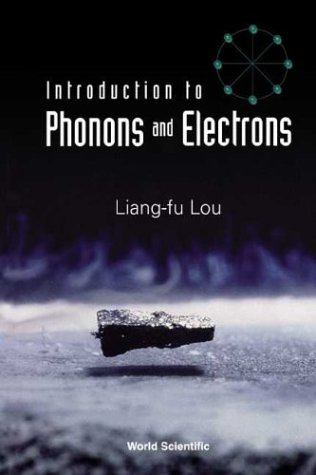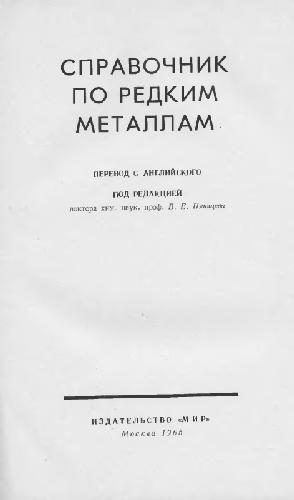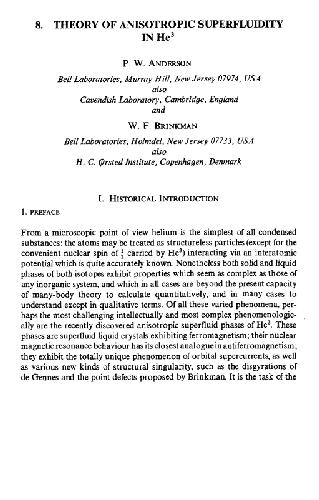Liang-Fu Lou9812384391, 9789812384393, 9812384618, 9789812384614
The book can be used as the beginning module of a one-year introductory course on solid state physics, and the instructor will have a chance to choose additional topics. Alternatively, it can be taught as a stand-alone text for building the most-needed foundation in just one semester.
Table of contents :
Contents……Page 10
Preface……Page 8
Introduction and Summary……Page 15
1.1 Lattice Basis Translation Symmetry Primitive Lattice Vector and Primitive Cell……Page 16
1.2 Rotation Symmetry……Page 17
1.3 Bravais Lattice……Page 19
1.4 Honeycomb Structure……Page 20
1.5 Cubic Crystals……Page 23
1.6 Close-packed Crystals……Page 27
1.7 Diamond Structure……Page 32
1.9 Beyond Single Crystals……Page 34
Problems……Page 35
Introduction and Summary……Page 37
2.1 A Special Set of Wave Vectors in the k Space……Page 38
2.2 Lattice Planes Crystal Directions and Miller Indice……Page 41
2.3 Bragg Law……Page 44
2.4 Electron Density in Crystal Lattice……Page 45
2.5 Diffraction Beam Intensity……Page 46
2.6 von Laue’s Diffraction Law……Page 50
2.7 Brillouin Zones……Page 51
2.8 Effects of Electron Distribution around Atoms in the Unit Cell……Page 53
Problems……Page 58
Introduction and Summary……Page 59
3.1 Equation of Motion in the One Dimensional Lattice……Page 61
3.2 Elastic Waves in Continuous Media……Page 64
3.3 Waves of Lattice Vibration and the Dispersion Relation w(k)……Page 65
3.4 Force Constants……Page 66
3.5 Long Wavelength Approximation……Page 67
3.6 Nearest Neighbor Approximation……Page 68
3.7 Phase Velocity and Group Velocity……Page 69
3.8 First Brillouin Zone……Page 75
3.9 Difficulties with the Classical Approach……Page 80
3.10 Two-body Potential……Page 81
3.11 Hamiltonian of Coupled Harmonic Oscillators……Page 83
3.12 Periodic Boundary Condition……Page 84
3.13 Normal Mode Coordinate — (Qk and Pk in the k Space……Page 85
3.14 Quantum Mechanical Operators Commutation Relations and the Uncertainty Principle……Page 88
3.15 Diagonalized Hamiltonian in the Normal Mode Coordinate……Page 90
3.16 Creation Annihilation and Number Operators — The N Representation……Page 96
3.17 Quantized Hamiltonian of Creation and Annihilation Operators……Page 100
3.18 Phonon Interpretation — Quantization of Lattice Vibration Waves……Page 102
3.19 Lattice Vibrations and Phonons — Connection Remarks……Page 103
Problems……Page 105
Introduction and Summary……Page 109
4.1 Equilibrium Probability Gibbs Distribution Partition Function and Temperature……Page 111
4.2 Thermodynamic Parameters……Page 115
4.3 Statistical Quantities for Phonons — Free Energy Partition Function Average Energy Gibbs Distribution and the Average Occupation Number……Page 116
4.4 Phonon Occupation Number — A Revisit……Page 119
4.5 Einstein Model for Lattice Heat Capacity……Page 120
4.6 Density of States……Page 121
4.7 Debye Density of States Debye Cutoff Frequency and Debye Cutoff Wave Vector……Page 125
4.8 Van Hove Singularity and Phonon Density of States in Real Crystals……Page 127
4.9 Debye Model of the Lattice Heat Capacity and Debye Temperature……Page 128
4.10 The Dominant Phonons……Page 131
4.11 Crystal Momentum……Page 133
4.12 Umclapp and Normal Processes of Phonon Scattering……Page 136
4.13 Thermal Conductivity……Page 138
4.14Phonon Mean Free Path……Page 141
Problems……Page 143
Introduction and Summary……Page 145
5.1 Drude Model and Sommerfeld Model……Page 147
5.2 Free Electron Quantum States and Density of States……Page 149
5.3 Fermi Parameters – Fermi Wave Vector Fermi Energy Fermi Level Fermi Sphere Fermi Surface Fermi Velocity and Fermi Temperature……Page 151
5.4 Fermi-Dirac Particles versus Bose-Einstein Particles……Page 153
5.5 Electron Statistics — Equilibrium Probability Gibbs Distribution Partition Function Conservation of Particles Chemical Potential and Fermi-Dirac Distribution……Page 155
5.6 Calculation of Chemical Potential as a Function of Temperature……Page 162
5.7 Heat Capacity of Free Electrons……Page 169
5.8 Ohm’s Law……Page 171
5.9 Hall Effect……Page 173
5.10 Some Limitations of the Free Electron Model……Page 175
Problems……Page 179
Introduction and Summary……Page 181
6.1 Equivalent Potential……Page 184
6.2 Bloch Theorem — A Proof from the Vantage Point of Translation Symmetry in the Lattice……Page 187
6.3 Bloch Theorem — A Proof from the Decomposition of Plane Waves in the Schrodinger Equation……Page 189
6.4 Some Remarks about Bloch Theorem……Page 194
6.5 One-electron Schrodinger Equation……Page 196
6.6 Non-degenerate Case — A Second Order Effect……Page 198
6.7 Degenerate Case — The First Order Effect……Page 201
6.8 Two-fold Degeneracy and Energy Bands……Page 202
6.9 Energy Bands Near Brillouin Zone Boundaries……Page 208
6.10 Band Effective Mass Group Velocity Crystal Momentum and Bragg Scattering……Page 210
6.11 Holes in Semiconductors……Page 219
Problems……Page 224
Bibliography……Page 227
Index……Page 229







Reviews
There are no reviews yet.